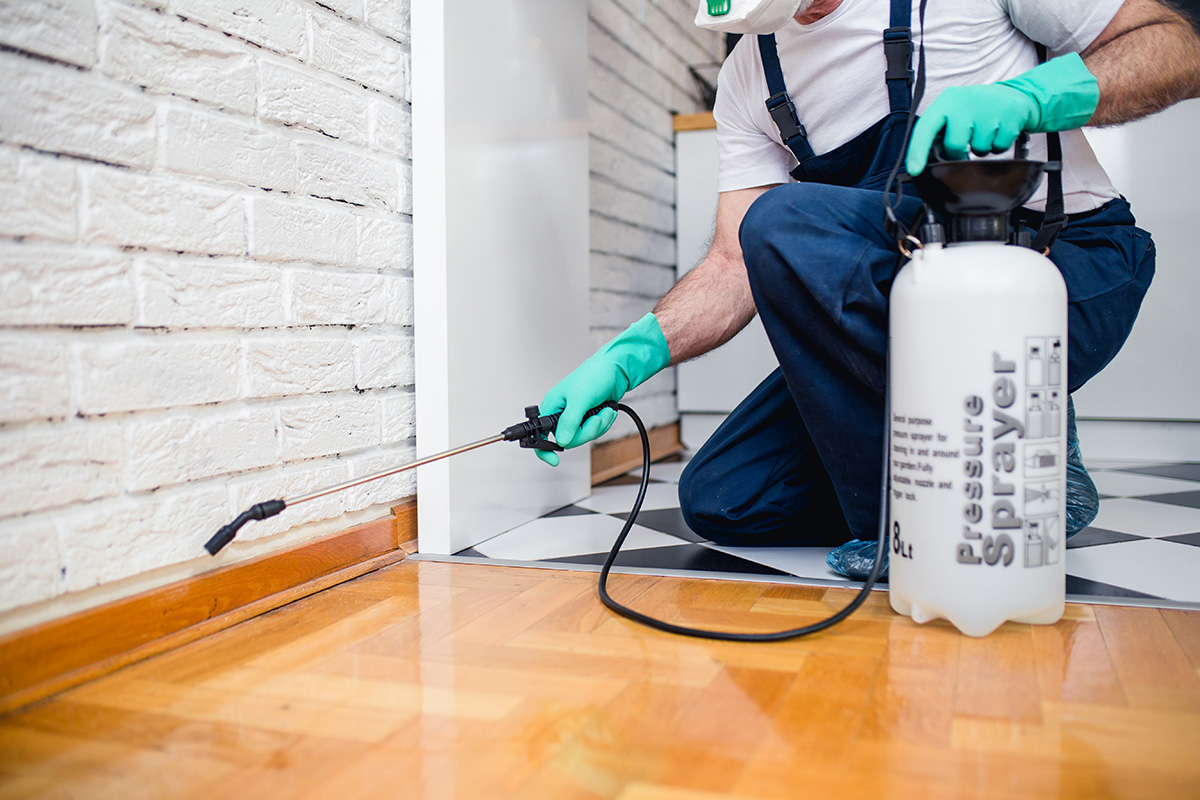A1 Bed Bug Exterminator Charlotte - Specialized Bed Bug Elimination
Bed Pest Therapy Breakdown: Contrasting Chemical Vs. Non-Chemical Solutions
In the realm of insect control, especially when taking care of the persistent problem of bed insects, the option between chemical and non-chemical therapy solutions can be an essential one. Both approaches offer distinct advantages and disadvantages, influencing factors such as efficiency, safety and security factors to consider, and total cost. By analyzing the nuanced information of each method, a more clear understanding of which course to pursue in attending to a bed pest invasion can be attained.
Performance of Chemical Therapies
Chemical treatments for bed pest invasions have actually been widely acknowledged for their fast and potent efficacy in eliminating these insects. When considering the effectiveness of chemical treatments, it is essential to comprehend that they can supply a thorough and fast service to a bed bug problem.
Moreover, chemical therapies have the benefit of providing residual effects, indicating that they can proceed to remove bed pests even after the first application. This residual activity is particularly useful in combating any kind of prospective re-infestations. Furthermore, the rapid action of chemical therapies can bring relief to people dealing with extreme bed insect problems, enabling them to gain back control of their space swiftly.
Safety And Security Interest In Chemical Solutions
When making use of chemical remedies for bed bug treatment is guaranteeing the safety and security of residents and the environment,One vital element that needs mindful consideration. While chemical treatments can be effective in eliminating bed pests, they might present threats otherwise dealt with appropriately. One of the main security interest in chemical services is the potential damage they can cause to human wellness. Direct exposure to certain chemicals used in bed insect therapies can lead to breathing issues, skin irritation, or various other adverse responses, especially in individuals with pre-existing problems or sensitivities. Furthermore, inappropriate application or dose of chemical pesticides can cause toxic deposits remaining in the cured area, posturing long-lasting health threats to residents.
Additionally, the ecological influence of chemical solutions is an additional substantial factor to consider. Some pesticides used in bed bug treatments might be harmful to beneficial bugs, wild animals, and environments if they seep into the dirt or water systems. It is necessary to make use of chemical treatments sensibly, complying with safety and security guidelines, and thinking about much less toxic options to mitigate these threats and make certain the risk-free and effective administration of bed insect problems.
Advantages of Non-Chemical Approaches
Considering the potential security issues and environmental influence related to chemical options for bed insect therapy, exploring non-chemical methods presents an encouraging option with a number of distinct advantages. Non-chemical techniques offer a much safer option for families, review specifically those with kids, individuals, or family pets delicate to harsh chemicals. These approaches remove the threats of direct exposure to poisonous compounds, reducing the potential for unfavorable health impacts. Moreover, non-chemical treatments are eco-friendly, as they do not add to air or water contamination, making them a lasting selection for pest control.
In addition, non-chemical services can be reliable in targeting bed pests, including hard-to-reach locations where chemical treatments may not permeate - A1 bed bug exterminator charlotte. Techniques such as warm therapy, vacuuming, steam cleansing, and mattress coverings give extensive obliteration without the usage of harmful chemicals.
Limitations of Non-Chemical Treatments

Additionally, non-chemical treatments often require multiple applications to accomplish effective removal. This can be time-consuming and might not constantly assure complete elimination of all bed insects and their eggs, specifically in hard-to-reach or hidden areas.
In addition, the success of non-chemical treatments heavily depends on appropriate execution and thoroughness, which can be testing for individuals without expert competence. Poor application of non-chemical approaches might cause insufficient obliteration, leading to persistent infestations and the need for extra treatments.
As a result, while non-chemical therapies have their advantages, it is necessary to recognize these limitations and consider them when identifying the most effective approach for managing bed insect infestations.
Cost Comparison: Chemical Vs. Non-Chemical Options
Given the constraints connected with non-chemical treatments, a necessary aspect to assess in the context of bed insect administration is the cost contrast in between chemical and non-chemical options. In contrast, non-chemical therapies like heat treatment or steam can be much more pricey, with expenses varying from $1,000 to $6,000 for an entire home. While the initial expense of chemical therapies may appear reduced, numerous therapies may be called for to totally get rid of the invasion, potentially raising the total cost.
Verdict

Thinking about the potential security issues and environmental influence linked with chemical solutions for bed pest treatment, discovering non-chemical techniques presents an appealing choice with numerous distinct benefits.Given the restrictions connected with non-chemical treatments, a crucial facet to examine in the context of bed bug management is the cost contrast in between chemical and non-chemical options. In contrast, non-chemical therapies like warmth therapy or steam can be extra costly, with prices ranging from $1,000 to $6,000 for a whole home. While the first expense of chemical treatments may appear lower, several therapies might be needed to fully get rid of the problem, potentially enhancing the overall cost.In final thought, when contrasting chemical and non-chemical bed bug treatment alternatives, it is necessary to think about efficiency, safety and security, benefits, constraints, and price.